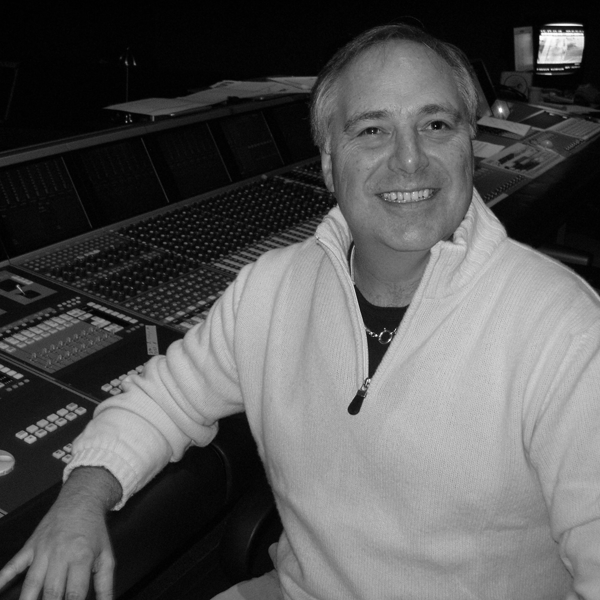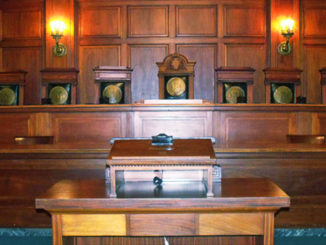
By Kristin Marguerite Doidge
The critically-acclaimed AppleTV+ series “Masters of the Air” features compelling performances from each of its star cast members as they took on the horror of air combat in World War II. But for veteran supervising sound editor and re-recording mixer Michael Minkler, CAS, it quickly became clear that the team needed to accurately capture the sounds of another star of the show: the “Flying Fortress” Boeing B-17 airplanes that dropped more bombs over Nazi Germany than any other aircraft during the war under the command of the United States’ Eighth Air Force.
“That was the first thing that we attacked,” he said. “We put a team of field recorders together. They went out for four days. [Fellow Supervising Sound Editor] Jack Whittaker and Re-Recording Mixer Duncan McRae went with us. They went out and recorded B-17s for four days, doing everything possible on the ground and in the air. You’d see microphones and four digital recorders recording everything – and that gave us a huge library of material.”
That library was essential for the sound designers to do their magic with the sound effects for the B-17 engines – beefing them up, pitching them, giving them expression. “Those engines had to be very descriptive – especially since the show features scenes in which the planes go from four engines, to three engines, two engines, one engine to no engine,” Minkler added.
A three-time Academy Award-winning sound re-recording mixer (“Black Hawk Down,” “Chicago,” and “Dreamgirls”), he has mixed more than 275 motion pictures over the last five decades. Among other notable collaborations with iconic producers and directors, he has enjoyed a long collaboration with Playtone Productions and its producing team led by Gary Goetzman and Tom Hanks.
Minkler is also the family’s third-generation film sound professional. His father, Donald Minkler, was an owner of his own independent post-production sound facility, Producers Sound Service, and his grandfather, Darrell Minkler, was a pioneer in the field of sound recording for both films and records as well as part-owner of the Hollywood landmark Radio Recorders.
CineMontage recently caught up with the younger Minkler to learn more about his work on “Masters of the Air” and his advice for the next generation of sound editors and mixers.
CineMontage: How did you first get involved with this project?
Minkler: We [Playtone and Steven Spielberg’s Amblin Partners] have been working together for quite a few years on many projects including “The Pacific,” which we did 13 years ago. It was another similar limited series about the war in the Pacific, so I knew this one was coming up. I was, of course, extremely excited about it, so when I got the call that it’s a go, and they went into production in 2021, they said, “OK, Mike, let’s put the team together.”
When this group of people decides they’re going to make one of these limited series, they go for it. This is basically four feature films as opposed to a nine-part television limited series. They have the budget for it and have the spirit of it, and everything is taut – you look at the art direction, the costume design, the actors and what they went through to learn their parts. There’s 350 speaking parts in this and a crew of 1,500 people on the set for over a year. Everyone was just working at the peak of their game to deliver something that was, I think, unbelievably perfect.
CineMontage: Tell us more about how the authenticity of the B-17 sights and sounds helped the actors capture the real-life horror of what the 100th Bombardment Group’s airmen experienced?
Minkler: The actors were reacting to a playback that was done on the set to allow them to experience certain things that may occur in flight. But once those visual effects started coming in, of course, we just had to start figuring out how to tear these B-17s apart, because that’s literally what happened to them: 77% of the B-17s that went up in the air did not come back.
So when people ask, “What does that sound like?”, all the bullets rifling through the fuselage and things blowing up onboard – oxygen tanks and gear – and then the flak that’s exploding around them or tearing them apart, we just had to use our imagination. But our imagination came from a very good place, a foundation that was built through very descriptive books – “Masters of the Air,” by Donald L. Miller and “A Wing and a Prayer: The “Bloody 100th,” by Harry Crosby – who was one of our featured characters in the film. We had the books to lean back on for their descriptive accounts and also had technical advisors at our disposal at all times for the whole two years that we were involved, so there was always somebody to answer a question.

CineMontage: What role did the music/score play in this series to evoke the sounds of the era as well as the emotions of the on-screen action?
Minkler: The music is really important. Gary [Goetzman] loves his music. He loved Blake Neely, our composer, and that was his first word: heroic. These men, even when they may be failing at what they’re doing at a particular time, they’re still heroic. How can they keep their composure? How can they crash land on their first mission and then get up the next morning and go up and do it again?
And that’s what the music was. Sometimes a certain scene was taken in a certain direction and the elements didn’t quite match. We’d just make adjustments. We had many, many things that we could do – we could go back in and re-record something, change instrumentation, write a new line on a particular cut, or change an emphasis on someone’s face or reaction. The music, the dialogue, and the sound effects departments were all fluid.
CineMontage: What scene stands out to you most from an emotional perspective?
Minkler: In episode six, when our guys are being loaded into trains, they’re in a train yard and another train is leaving loaded with hundreds or thousands of women that are being taken off to a work or extermination camp. The screaming women, in all different dialects – there’s Polish, there’s French – all kinds of screams to the Americans: “do something, do something.” The women took over the scene – there is no train sound effect. We would experiment with doing things like that, and then if it worked, we left it alone. If it didn’t work, we kept going at it and would try something else. So, that really stands out to me. Hopefully there’s a lot that stands out to other people.
CineMontage: What advice do you have for the next generation of sound editors and mixers as technology continues to evolve?
Minkler: When I started off in 1970, obviously things were very different. They were, by today’s standards, very crude. There was a lot of manual labor that we had to do. Mixing was actually a very physical job. You’d have a rehearsal to listen to the track for the very first time, and if you made good notes, you could go along with those notes, but if you didn’t, you’d mess it up, and then you’d have to back up and jump in to continue recording. Your fellow mixers didn’t like you very much if they were constantly having to back up because you screwed up what they were doing.
It was at that time when I just started thinking, “There’s got to be a better way to do this.’” I would try any technique I could come up with to increase our capabilities, doing a sweeter, softer thing, and something that’s more manageable. Lots of people didn’t pre-mix prior to 1977, and all of that stuff is so common today, but it was invented. We invented the way we used to have to do things.
We went from mono to four-track stereo, six-track stereo, baby boom, Dolby six-track, and then there were all of these hybrid systems of stereo – there was just so much of that going on in the 1970s, 80s, and 90s. It was a time of trial and error, and we really learned a lot – everything was changing because it had to get better.
Post “Star Wars,” everything was bigger and better – clean, softer, more manageable. Then along comes the digital age, and it allowed us to do things cheaper, because it meant less manpower. You could do things instantly, whether it’s picture editing or sound editing or sound mixing, you could just change it almost instantly, but that didn’t make anything cheaper. It made things more expensive, because if you give somebody a chance to change their mind, they will.
Now you can do it all a thousand times faster, but think about what you’re doing. That’s what I say to people today: commit. Don’t just leave all of your doors open because you’re afraid to commit to anything because somebody may change their mind. Options are good, but come to the point where you’ve got to commit. Commit to your good idea.
This interview has been edited for length and clarity.





